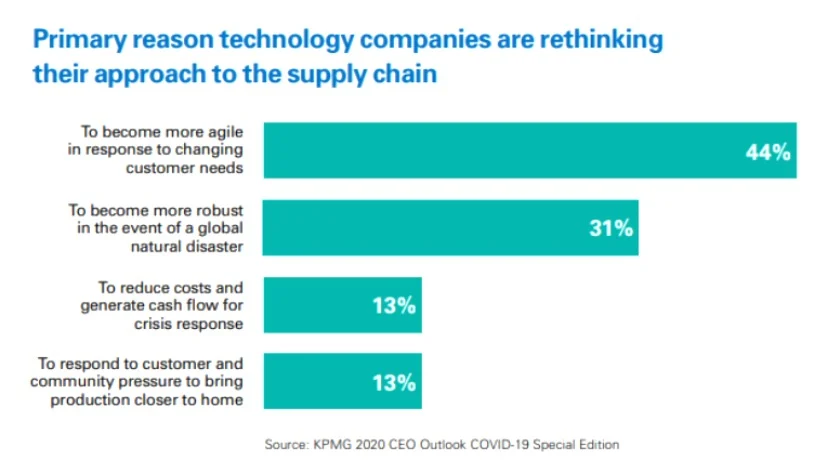How an integrated insights solution can help firms realize their strategic transformation goals

In 2012, Adobe embarked on a disruptive path shifting from its mainstream software licensing business model to a SaaS subscription model. The decision emerged out of the 2009 recession that shook the company’s revenues due to lowered corporate spending. Fast forward to 2014, Adobe transformed from packaged software to a new cloud subscription. This successfully attracted over four million SaaS subscribers and drove a 31% quarterly growth.
Such a radical rethinking of business models can arise during unprecedented times, such as global economic downturn or a pandemic. Globally, companies have had to shift to remote working environments during COVID-19. 89% of technology company leaders report that the digital transformation of their businesses has sped up. To adapt and thrive amidst volatility, technology firms must embrace the power of agile, strategic transformation at scale.
What is strategic transformation?
KPMG reported that 57% of technology company leaders have started rethinking their global supply chain process in response to COVID-19. Such a shift in operations and policies affecting an entire organization to strive amidst disruption is transformational. Introducing new processes or altering the existing ones requires companies to identify current challenges, generate creative solutions, and reframe business models.

Strategic transformation is a big move, unlike continuous or episodic changes that occur within business units time and again. Any firm’s leadership plays a critical role in employing design thinking and agility to achieve a successful strategic transformation.
Large-scale change means that an organization must leverage data and insights to realize its vision and goals. That said, gaps exist even in making the most out of data while implementing transformation strategies. Common pitfalls include lack of collaboration between cross-functional teams, duplication of research effort, and stale or incomplete data. A lack of coordination with internal teams can also occur across multiple research vendors.
An integrated insights solution can help bridge these gaps by supplying the requisite data and insights at every step of the transformation process to inspire brilliant decisions across the organization.
What is an integrated insights solution?
An integrated insights solution essentially meets an organization’s collective research and intelligence needs to drive agility and greater efficiencies. Instead of dealing with multiple research vendors, business departments engage a single supplier of insights. This ensures greater alignment to overarching business objectives and organizational context.
With the help of actionable insights derived from such a solution, businesses can pivot their models to thrive strategically and innovatively. Here are some fundamental ways in which integrated insights solutions provide an edge in enabling firms to achieve strategic transformation:
1. Increase operational efficiency
A survey revealed that 77% of CEOs focus on creating operational efficiencies to drive revenue growth. While skill gaps hinder this transformation, time, effort, and infrastructure ring in next.
In a nutshell, your resources need to stay focused on what they do best. Thus, they must be supported with a constant influx of multi-dimensional, domain-specific insights delivered in a timely and actionable manner.
With decades of market experience and expertise, an integrated insight solution partner is preferable to multiple vendors simply because they:
- Provide a streamlined research request-to-delivery process customized to suit your operations
- Act as a single point of contact for projects that rely on multiple data sources and research methodologies (primary market research, secondary analysis, and social listening)
- Deliver contextual insights through a close understanding of your business
- Provide an outside-in perspective to shape business strategies
- Integrate research, intelligence, analytics, and automation to enable faster decision-making
2. Achieve cost-effectiveness
Cost savings can be a natural consequence of improved operational performance amidst enterprise-level changes. Instead of each department outsourcing their requirements to multiple research providers, having a single research hub eliminates effort duplication.
Moreover, it’s easier for a single provider to create an exhaustive self-serve repository of all the insights. These insights can be delivered in a manner aligned to the firm’s recurring data and insight needs. In addition, organizations can save big on additional staff hired solely for organizing and managing such an ever-growing information database.
3. Improve execution through automation
We live in an era plunged in data. Yet, culling result-oriented insights often resembles looking for a needle in a haystack. So, employing digital technologies like automation, insight dashboards with customized views and analytics differentiate winners from the rest.
Businesses collect and aggregate data for a better understanding of markets and streamlining processes. In fact, real-time insights can provide a competitive advantage to successful organizations. To help firms make better and faster decisions, generating insights using automation tools such as natural language generation (NLG) can prove effective. Presenting automated insights as a written analysis allows various business units to get real-time insights via smart and intuitive data visualization.
Furthermore, automation makes it easier to create interactive business intelligence dashboards that serve up the right data visualization. This process helps to synthesize holistic insights for stakeholders across the organization. Thus automation provided by an integrated insights partner helps firms act quickly and decisively to stay competitive.
4. Provide customized views to different business departments
Different data views are needed to answer different business questions. For example, while both marketing and customer support teams might be looking at customer feedback data, one might need to track the market perception of the brand and the other the CSAT score. An integrated insights solution provider can repurpose data and research to offer such user-centric views.
Moreover, with time and frequent engagement, your provider can distill a deeper “how” and “why” insight aligned to your short-term targets and long-term business goals.
For decision-makers, it’s critical to understand the power of committing to transformation. Savvy companies will see value in collaborating with a reliable end-to-end research provider. This step can help them reap the benefits of an intelligence base constantly honed for better process and insight outcomes.
Netscribes offers integrated insights solutions to drive greater agility and efficiencies across global organizations. To learn more, contact us.






